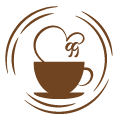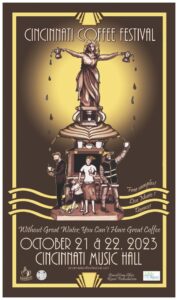If you’re planning to travel to Japan, you might wonder, “How do the Japanese make & drink their coffee?”
Well, coffee consumption in Japan ranks 3rd in the world.
You can get it at every corner, and at a coffee shop, you’ll find it hot, iced, cold, and frozen, with an array of different tastes and flavor combinations.
Having lived in Japan for over two years and regularly returning, I will teach you some of the most popular ways they prefer coffee in this article.
By Kim.
Affiliate disclosure
This page may contain affiliate links – we may earn a small commission when you make a purchase through these links. This is at no extra cost to you.
But First, Let’s Talk About Japanese Coffee Beans
Do Japanese coffee beans exist?
Well, yes, Japanese coffee beans do exist.
But only in small quantities, mainly located in the southern tip of Japan and Okinawa.
This is due to Japan not being located in the “coffee belt.”
However, thanks to Japan’s tropical climate, unique soil, and technology, they are successfully growing their beans.
If you ever find yourself in Okinawa, I recommend taking a trip to Matayoshi Coffee Farm. From November to March (or until all the beans have been harvested), you can get a specialty tour of the harvesting experience.
Japan imports beans from around 40 countries for most of their coffee to satisfy their liquid, brown gold needs.
Let’s Get On With Japanese Coffee
Unlike typical coffee culture in the West, Japanese coffee culture developed uniquely.
While complimentary bread/toast and eggs are often offered at the “Morning Service,” in restaurants, customers will order iced coffee even during winter when the weather is freezing.
Then there’s the canned coffee, which has evolved into its own culture.
What Is Japanese Morning Service?
Morning Service is a time-limited offer given in the mornings (obviously) at certain cafes and restaurants.
It usually means adding a breakfast set consisting of toasted bread and eggs to your drink, at a discount or simply for free.
Some places may also offer the reverse by adding a free drink with the purchase of a breakfast set.
From my experience, most people will have breakfast with regular black or iced coffee.
What Is Japanese Morning Service?
Morning Service is a time-limited offer given in the mornings (obviously) at certain cafes and restaurants.
It usually means adding a breakfast set consisting of toasted bread and eggs to your drink, at a discount or simply for free.
Some places may also offer the reverse by adding a free drink with the purchase of a breakfast set.
From my experience, most people will have breakfast with regular black or iced coffee.
Does Canned Coffee Taste Good?
Yes, you read that correctly; canned coffee is exactly what it sounds like.
Canned coffee is the cheapest, most available, and most convenient way to drink coffee in Japan.
In fact, you’ll find it in every vending machine, on every corner of the country.
This has propelled the cans to be the most popular coffee drink in Japan.
When you are commuting or work, busy, and don’t have time to stop by a coffee shop but feel like having a coffee, then canned coffee is the right for you!
And the best part? It costs less than a dollar!
So how does it taste?
While I have my personal favorites, for someone who doesn’t drink it often, it may be hard to find a brand and taste that you like.
I recommend the Premium BOSS Black for those just starting in the world of canned coffee!
You’re sure to find one you like with the many different brands and flavors.
What About Japanese Iced Coffee?
On the other side of the spectrum of cans, we’ve got Japanese iced coffee (strong, hot coffee, but with ice cubes) emphasizing the actual coffee itself.
So how do they serve it? Japanese iced coffee is always served black but often comes with packets of sugar/syrup and milk/creamer on the side.
Cold coffee is not for everyone, but the taste of robust coffee smoothed out with ice cubes is much easier to drink in the heat.
You’ll find iced coffee in almost every restaurant as an alternative to fizzy drinks or tea.
What Syrup Is Commonly Used In Iced Coffee In Japan?
Because regular sugar doesn’t melt and mix well in cold liquid, the syrup commonly used in Japan is called “Gomme Syrup” or “Gum syrup.”
Regular sugar syrup is just water and sugar, but gum syrup also has the addition of gum arabic, which makes the syrup less sweet and a lot smoother.
In the west, gum syrup is generally used for making cocktails to soften the taste of hard alcohol.
Are There Any Japanese Coffee Chains Then?
Sometimes you want a latte with some light meal, or maybe you have some work to finish on your laptop and need a quiet, chill place to sit in.
I get it.
Some days, canned coffee doesn’t cut it, and we need some proper espresso.
Those days, they have an extensive selection of different Japanese coffee chains.
Of course, there’s Starbucks and Tully’s, but I recommend trying the locals.
Ueshima Coffee Company; Every Writer’s Dream Cafe
Ueshima Coffee Company (UCC) has been around since 1933 and is the company that invented the very first canned coffee!
While a bit more expensive compared to their counterparts, you’ll get what you pay for.
The quality is high and, in my experience, every shop accommodates those of us with laptops.
If I got extra funds lying around, this is where I’ll go.

When You Need A Quick Break, Choose Doutor Coffee
With inflation vacuuming our wallets, you may want a cheaper alternative, and that’s where Doutor Coffee comes in.
Founded in 1976, Doutor has over 900 locations in Japan.
Thanks to its cheaper menu, it’s a popular cafe for students to study at and is a great place for quick breaks on your travel schedule.
Third Wave Coffee Turns It Into An Art
Besides the big chains, Japan has recently seen a significant increase in small artisanal cafes.
These are often tiny and hidden away in alleys.
Like traditional tea ceremonies, third-wave coffee baristas treat coffee making with the same respect and pride.
It’s just so satisfying watching their meticulous process and precise measurements.
Traditional Kissaten For The Authentic Japanese Experience
Kissaten translates to “tea shop” and has been around for hundreds of years.
These are often more traditional in design and menu, offering conventional Japanese snacks and standard coffee or tea.
While that might not seem very interesting, it’s an entirely different atmosphere and feeling from other more modern places.
It’s simply something you have to experience for yourself to understand.
Japan’s Coffee Consumption Per Capita
Now that you know how the Japanese make & drink coffee, you may wonder how much they actually drink?
What is Japan’s coffee consumption per capita?
Statistics show that Japan drinks an average of 7.4 lbs of coffee per capita per year.
Compare this with 9.7 lbs in the U.S., and you’ll see that it’s not too big of a difference.
Japan’s coffee consumption per capita is the highest in all of Asia.
Japanese coffee culture can look strange to the unprepared, but it’s always worth a taste.
For coffee lovers, Japan is a must-visit.





